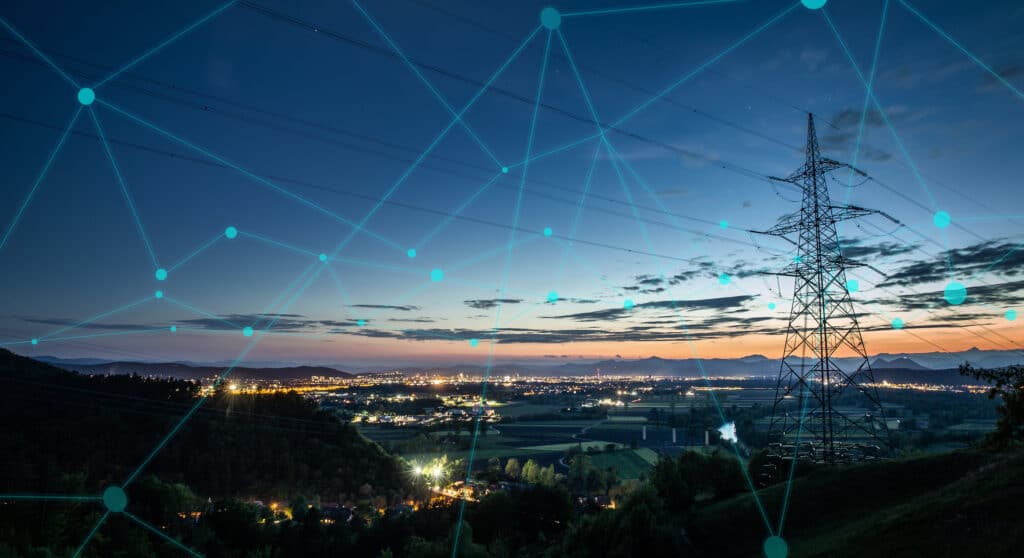After the 2021 storm in Texas, a lot of attention was brought to the power grid and electrical infrastructure that powers the state. This system is responsible for providing power for millions of Texas residents, as other power grids around the country light up the rest of the nation.
So how did the power grid develop and become the way that cities are powered?
The Power Grid Begins in the Early Days of Electricity
In a previous post, we discussed how new construction buildings had to consider their electrical setup in order to ensure adequate power. We touched on the background of the electrical grid, but the story of its development is a fascinating snapshot of human’s understanding of electricity and the ability to harness its power to improve society and create the modern lifestyle we live today.
The power grid as we understand it today has its humble beginnings in the 1880s, as discoveries of electricity were accelerating. It began with isolated power generation systems. Two electricians in England engineered the first power systems using two waterwheels. This original concept would soon grow to be the first distribution system in Manhattan known as Edison Electric Light. Edison’s company was the only one at the time using direct current.
The Current War
Of course, no story of electricity would be complete without recounting the current wars in the late 19th century between Edison and Tesla, or the war between direct current and alternating current. Small DC systems were used to power luxury structures such as hotels or the mansions of people like J.P. Morgan.
In 1896, George Westinghouse—with the help of Tesla’s ideas—built the first AC system connecting Niagara Falls to Buffalo, NY. AC had an advantage over DC. It was better at the transportation of electricity over long distances. DC generators had to be closer to the source, no more than a mile.
Pearl Street Station is Born
The first system of commercial electric lighting and power was revealed in 1882 by Thomas Edison. This, it is said, launched the beginning of the modern electric utility industry. This first iteration of a power grid was widely successful and would serve as a model for the rest of the country. Two years after its opening, the Station served 508 customers and other electrical grids were opened in various states including Massachusetts, Pennsylvania, and more.
At the turn of the 20th century, competition led to the growth of utility companies in an open market. Consumers could choose from various utility companies that would go head to head for their business. During the Great Depression, this model was discontinued, as states began regulating the way they provided their residents with electricity and power.
By 1914, 43 states had regulated commissions that would oversee electric utilities. Slowly, this system led to more accessible and cheaper power for all residents.
Electricity in Texas in the 21st Century
Texas is unique among the states in the nation because it is very independent when it comes to its energy production. The Texas system is different. In the 1880s, utility companies in Texas were formed to generate electricity for various needs of the state.
When Congress passed the Federal Power Act, which stated that the federal government had the authority to regulate the transfer of electricity between states, Texas state legislators came to the agreement that they did not want to send electricity out of state. The existing utility companies partnered together during World War II and formed a kind of alliance to fulfill the needs of electricity during the war around the Gulf Coast. This was known as the Texas Interconnected System in 1941.
After a power outage in the mid-1960s, the state developed the Electric Reliability Council of Texas, known as ERCOT. The role of ERCOT grew under Governor George W. Bush. In 1996, ERCOT began facilitating power production in the state to provide Texas with competitive utility prices.
As explained by Texas Monthly magazine, the deregulated power grid in Texas means that no one company owns all the power. ERCOT is mostly in charge of regulating the cost of power and balances supply and demand in the state. Although ERCOT is a nonprofit, it is regulated via the state legislature, which has the power to write laws to change/alter the system.
The Beauty of Electricity and Electric Work with Quality Equipment and Service
Without the grid, our lives would look very different. Without highly trained and knowledgeable engineers and electrical workers, our lives would also be very different. Remsa USA provides customers with high-quality transformers, electrical motors, and more.
Want to learn more about what we do? Call Remsa USA today.
